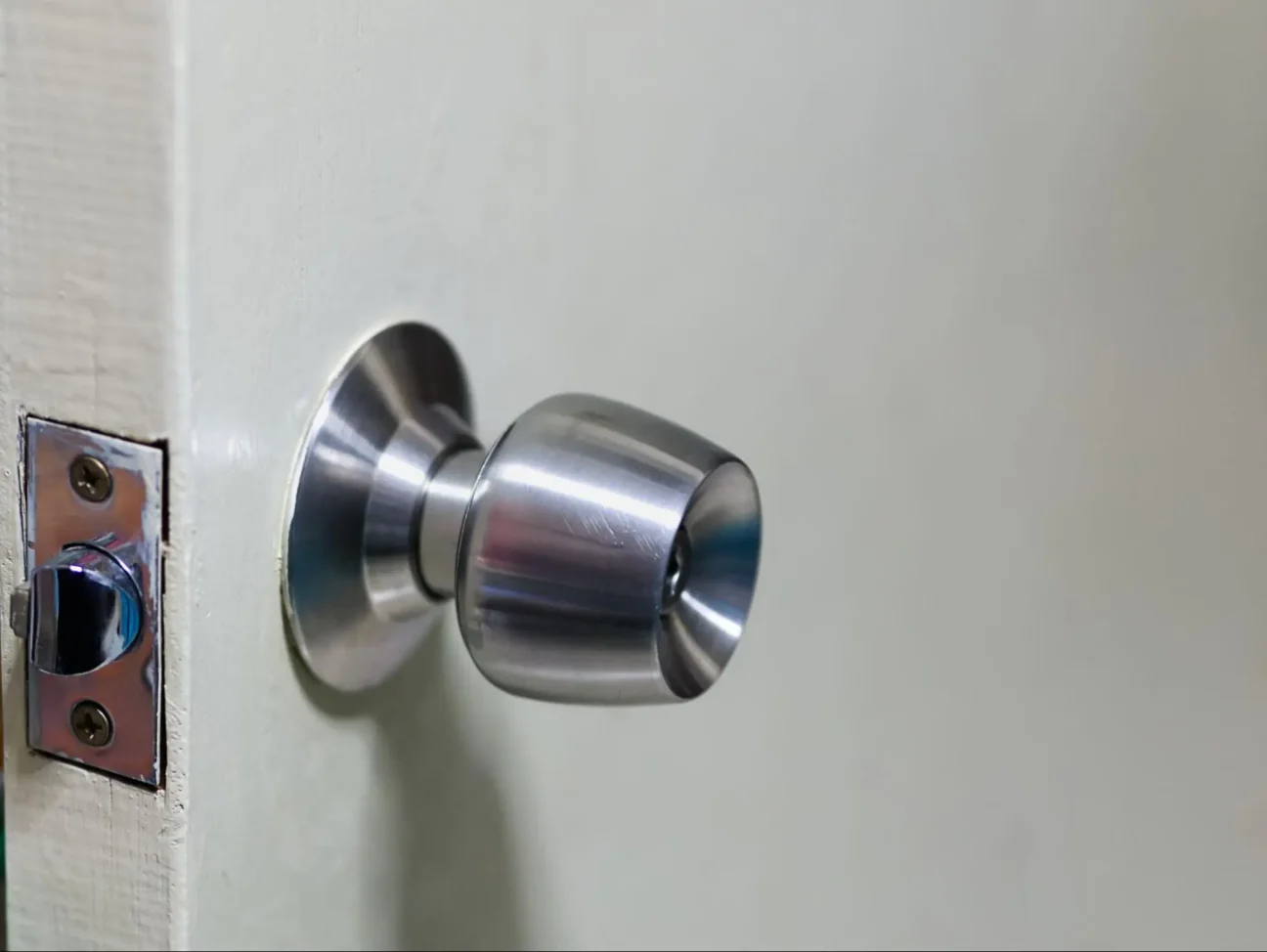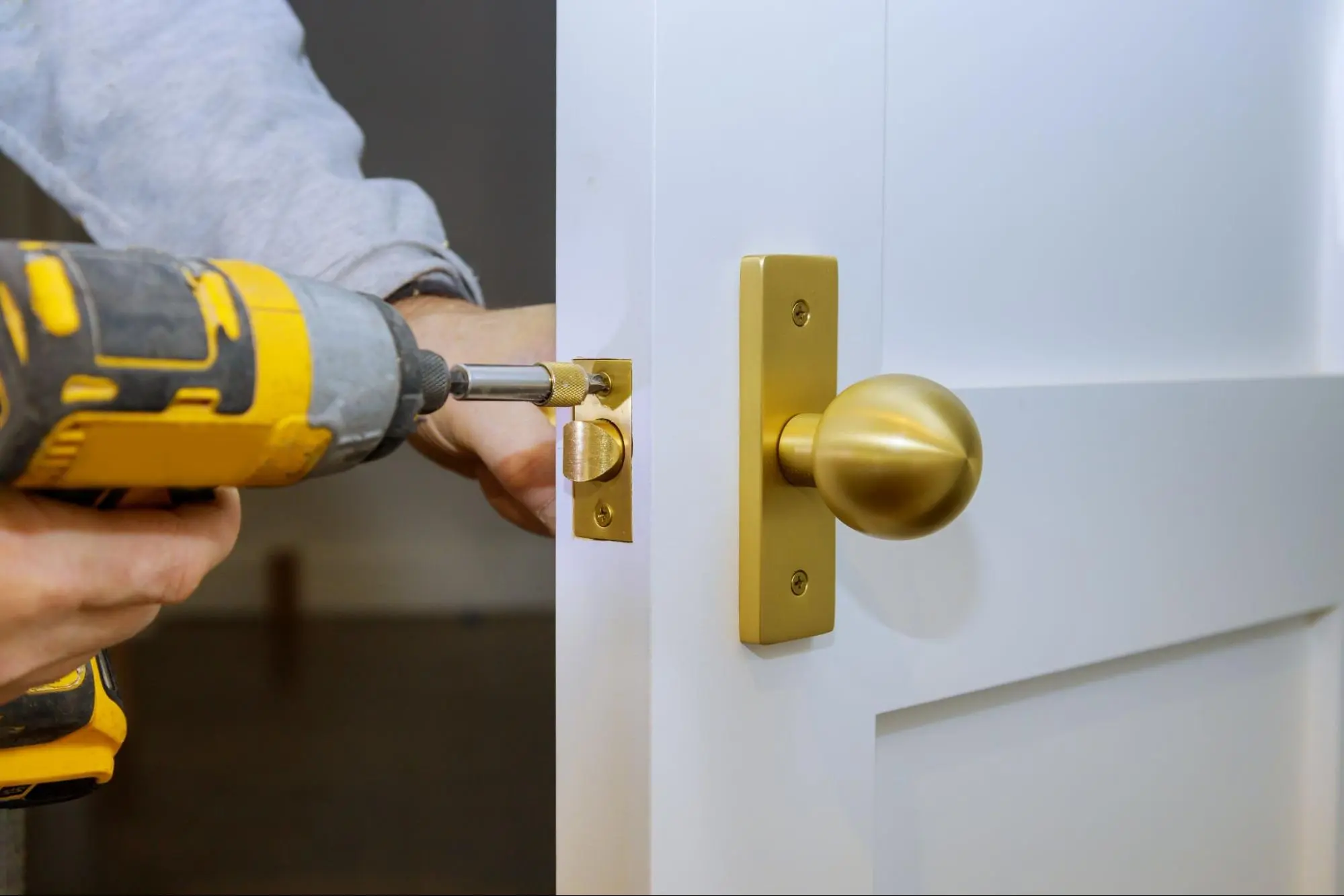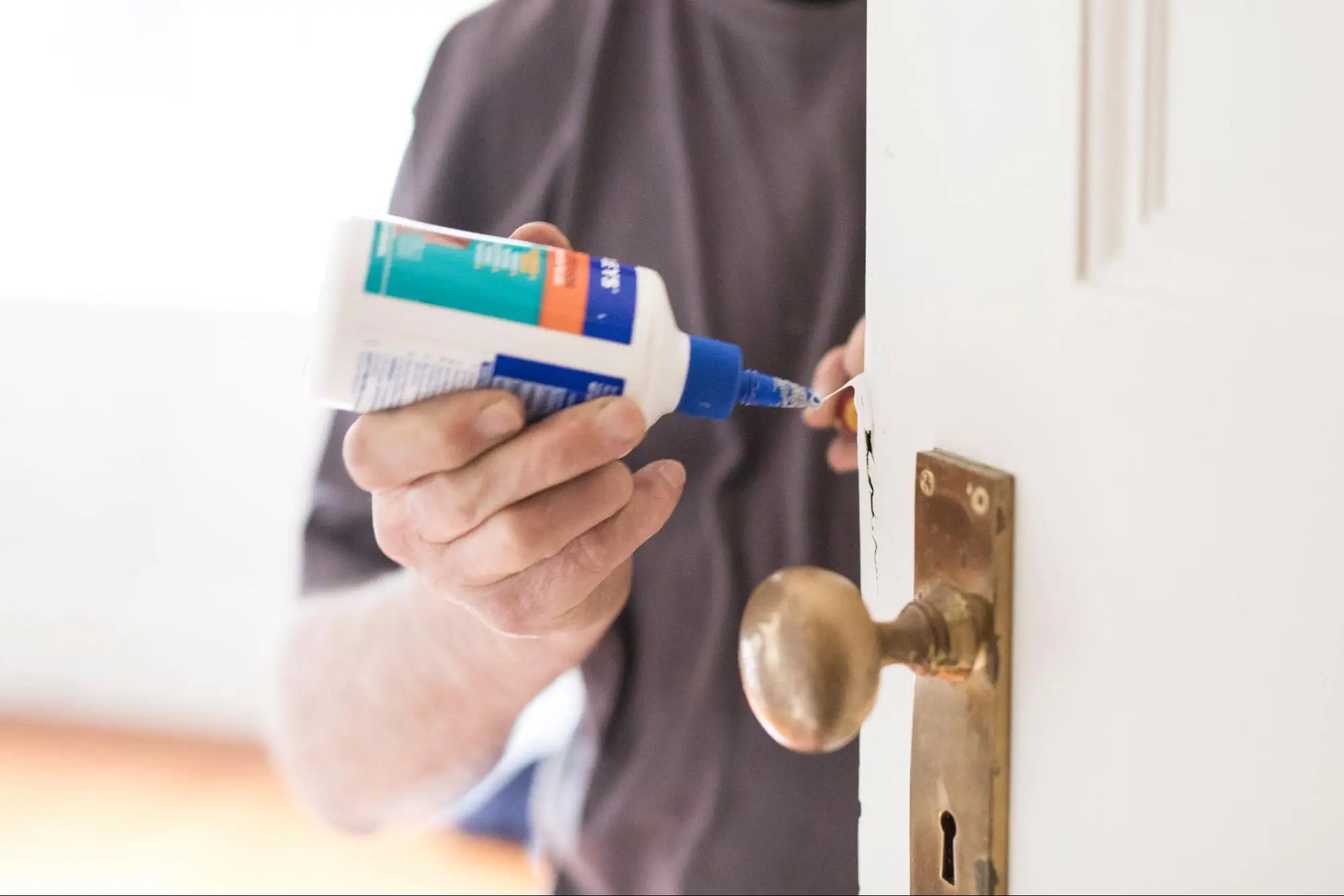
A faulty door knob can be frustrating, but fixing it is easier than you might think. With just six simple steps, you can restore the function of your door and improve your home’s security. Knowing how to address common issues with door knobs can save you time and money.
This article will guide you through the process, making it accessible whether you are a beginner or have some experience with DIY projects. You will find clear instructions that make repairing your door knob straightforward and efficient.
First, look closely at the door knob. You might find that loose screws are the reason for the wobbliness.
Use a screwdriver to gently tighten any exposed screws. If you see them moving, they likely need attention. This step can significantly improve the knob’s stability.
For knobs with hidden screws, check for a small hole around the knob’s neck. You can use a paperclip to press in and release the knob. Then, look for screws inside that need tightening.
If the knob crews are worn or rusted, consider replacing them. New screws can create a firmer fit and enhance the knob’s lifespan.
After tightening or replacing the screws, retest the knob. Make sure it turns smoothly and feels secure. You may need to explore other potential issues if there is still movement.
Regular checks on door knobs can prevent future problems. Keeping screws tight will save you time and effort later on.

To fix a loose door knob, start by locating the set screw. This screw secures the handle to the spindle. It’s often located on the side of the knob or underneath a decorative cover.
If you find a visible screw, use a screwdriver that fits it. Turn it clockwise to tighten. Make sure it is snug but not overly tight, as this can damage the knob.
For knobs with hidden screws, look for a small hole or slot. You may need a flat-head screwdriver or a paper clip to press the release mechanism. Gently push and hold while turning the knob.
After securing the knob, test its function. Turn the handle to see if it moves smoothly. If it still feels loose, you might need to apply a bit more pressure when tightening.
Always remember to keep the screw in a safe place while you work. Losing the set screw can make your repair more difficult. You can refer to guides on fixing a loose knob for specific brands, as some handles have unique designs.
Following this step should help restore your door knob’s stability. A properly tightened set screw can enhance both the look and function of your door knob.
First, to realign the strike plate, check if the door latch lines up with the strike plate when the door is closed. Adjustments are needed if the latch does not fit appropriately into the plate.
Open the door and plan to move the strike plate. You can see where the latch hits the plate by applying a little chalk to the end of the latch. Close the door and turn the knob to let the latch make a mark on the strike plate.
Unscrew the strike plate from the door frame. If the mark shows it is too high or too low, use a file to gently remove some material from the plate. You can also adjust the plate’s position if needed so that the latch fits perfectly.
If the strike plate is very loose or moves easily, consider adding longer screws. This can help to secure it better to the frame. Be sure to tighten everything down so it stays in place.
After making adjustments, recheck the door. Close it and test if the latch catches properly inside the strike plate. Repeat the process until it latches smoothly without any resistance.

Lubricating the lock mechanism is an essential step in fixing a door knob that sticks or doesn’t turn smoothly. Dirt and dust can build up inside the lock, causing it to malfunction.
Start by choosing a suitable lubricant. Graphite powder is often recommended for locks because it does not attract dirt. You can also use silicone-based sprays for this purpose.
Before applying lubricant, clean the keyhole and surrounding area. Use a damp cloth to remove any visible dust or debris. This ensures that the lubricant can work effectively.
Next, apply the lubricant sparingly. Insert the tip of the applicator into the keyhole and give it a small squeeze. You only need a little—too much can clog the lock.
After applying the lubricant, insert your key into the lock and turn it back and forth several times. This helps distribute the lubricant throughout the mechanism.
If the lock still feels sticky, apply a little more lubricant. Repeat the process until you achieve smoother operation.
Remember to wipe away any excess lubricant to avoid dripping on your door or floor. Regular maintenance like this will keep your door knob functioning well for a long time.
To replace the latch, start by locating the screws on the edge of the door that secure the latch mechanism. Use a screwdriver to remove these screws carefully.
Once the screws are out, gently pull the latch assembly from the door. Take care not to damage the surrounding area.
If the latch is stuck, you might need to wiggle it a bit to release it. Check the condition of the old latch. If it appears worn or broken, a new latch is necessary.
Now, insert your new latch into the hole where the old latch was. Ensure it fits snugly and properly aligns with the strike plate on the door frame.
Next, secure the new latch by tightening the screws you removed earlier. Ensure it is firmly attached, but don’t overtighten, as this can cause damage.
Test the latch by inserting and turning the doorknob. The latch should move smoothly in and out of the door frame. If it doesn’t, check its alignment and make any necessary adjustments.
By replacing the latch correctly, you ensure that your door knob functions smoothly and securely.

If your door is sticking or isn’t aligning correctly, adjusting the hinges may help. Start by inspecting the door and the hinges. Look for gaps between the door and the frame.
To adjust the hinges, you might need a screwdriver. Check if the screws in the hinges are loose. If they are, tighten them to see if it improves the door’s alignment.
If the door still doesn’t fit well, you can take it a step further. Unscrew the middle screw on the top hinge. Replace it with a longer screw. This will help pull the door closer to the frame.
You can also tweak the position of the hinges. Sometimes, you may need to tap the hinge slightly to adjust the angle. Use a hammer carefully to avoid damaging the door or the frame.
You might need a bit more adjustment for doors that rub against the frame. You can slightly lift the door by adjusting the bottom hinge. Loosening the screws and shifting the hinge position can help.
After making your adjustments, test the door. Open and close it a few times to see if it operates smoothly. Adjusting the hinges can often resolve issues related to sticking doors. If problems persist, further inspection may be needed to identify other issues.
To fix a loose doorknob, first check for loose screws. If the main screws are loose, tighten them with a screwdriver. Next, if your doorknob has a set screw, make sure to tighten that as well. This should help secure the knob firmly.
If your doorknob won’t turn, inspect the locking mechanism for any debris or dirt. Sometimes, lubrication can help ease the movement. Apply a few drops of lock lubricant to the mechanism. If this doesn’t work, you may need to remove the doorknob and check for internal issues.
If your doorknob has fallen off, locate any screws or set screws that may have come loose. Reattach the knob by aligning it with the spindle. Tighten all screws securely to ensure it stays in place. Double-check that the latch is functional.
If your doorknob installation isn’t working, first ensure all screws are correctly tightened. Check the strike plate’s alignment to ensure it lines up with the latch. If the knob still doesn’t function, examine the lock mechanism for any obstructions and lubricate as needed.